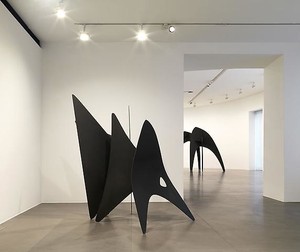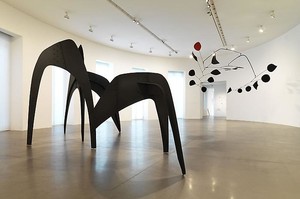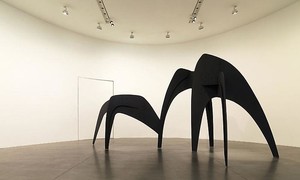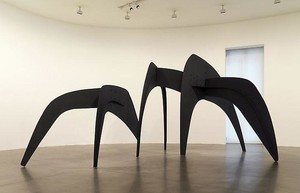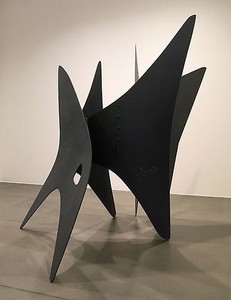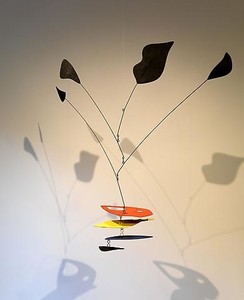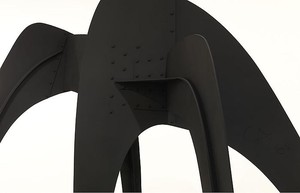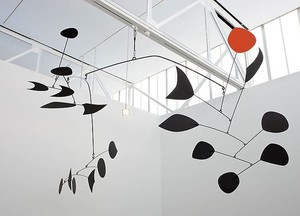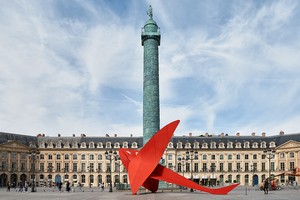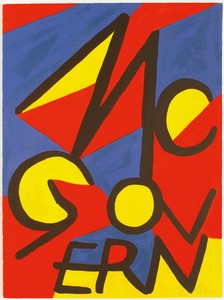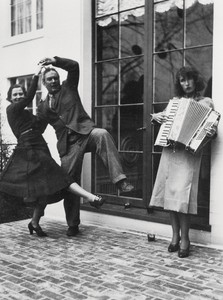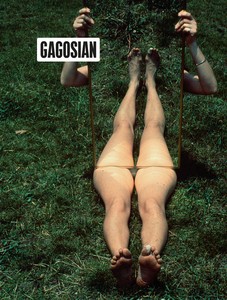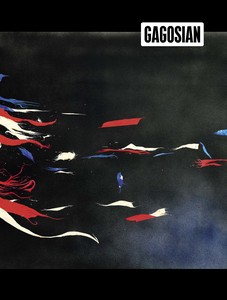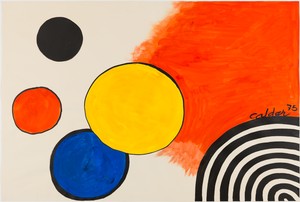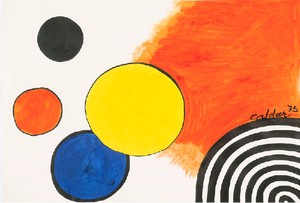People think monuments should come out of the ground, never out of the ceiling, but mobiles can be monumental too.
—Alexander Calder
Gagosian Gallery is pleased to present an exhibition of large-scale sculptures by Alexander Calder made between 1948 and 1964.
Born into a family of celebrated yet traditional artists, Calder's innovative genius changed the course of modern art. He began by developing a new method of sculpting — bending and twisting wire to "draw" three-dimensional figures in space. Resonating with early Conceptual and Constructivist art as well with as the language of early abstract painting, Calder gained renown for his invention of the mobile (a term coined by Marcel Duchamp to describe Calder's new kinetic sculptures) in which boldly colored abstract shapes made of industrial materials, including steel and wood, hang in perfect balance from delicate wires. Although his first mobiles made use of modern technology and were driven by electrical or mechanical means, he soon preferred their movements to be guided by the unpredictable influences of wind and water. While the kinetic energy, dynamism, and ebullience of the mobiles remained of primary interest throughout his life, Calder also created a number of important static sculptures, which Jean Arp named "stabiles" to distinguish them from their kinetic counterparts. These constructions utilized various techniques of welding and bolting to create a type of metalwork that rejected the weight and solidity of a bronze mass, yet allowed an object to displace space in a three-dimensional manner while remaining linear, open, planar, and suggestive of implicit motion.
By the 1950s, Calder's international recognition had increased significantly, allowing him to expand his studios in the United States and France; as a result, he was able to create his mobiles and stabiles on a monumental scale. In Untitled (Vertical Out of Horizontal) (1948), an early painted steel mobile from this period, Calder's sparing but deliberate use of color as well as weight and movement created increasingly complex kinetic relationships. In Rouge Triomphant/Triumphant Red (1959-63), a mobile that spans almost six meters, he introduced primary red to provide vivid contrast to his almost exclusive use of black. In this rhythmic work, three groups of black "scales" are offset by an occasional red one to create a dynamic yet delicately balanced assemblage, whereas Blanc de Blanc (1960), a mobile consisting solely of white elements, is as light and effervescent as the sparkling wine to which the title refers.

